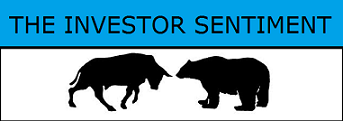The effects are more pronounced in licensed specialized banks where non-performing loans rose to 6.6 percent of gross loan in the March 2020 from 5.5 percent in December, central bank data showed.
Sri Lanka’s bad loans spike about a year to 18 months after each currency crisis, when the central bank fires unsustainable credit with printed money to enforce pro-cyclical rate cuts and corrections are made to stop balance of payments trouble.
Loans without Deposits
The ratio of bad loans initially falls rapidly as the credit system recovers from the previous currency crisis, and the new loans rise rapidly fired by printed money without banks having to collect deposits to give loans, putting pressure on the currency and driving imports up.
In the 2008/2009 currency crisis which was compounded with an intensifying war and also the collapse of a global credit bubble fired by the US Federal Reserve bad loans in banks rose to 8.8 percent.
But Sri Lanka recovered fast helped by the end of a war and also US monetary loosening, with the rupee allowed to re-appreciate close to pre-crisis levels as credit fell in the immediate aftermath of the crisis.
Bad loans in banks fell to 3.8 percent as credit was fired in the 2011/2012 crisis with printed money (terminating term repo deals and outright purchase of bills later).
Bank bad loans peaked at 6.2 percent after the 2011/2012 crisis, with specialized banks peaking at 12.5 percent.
Then bad loans fell to 2.6 percent as the next crisis was fired in the 2015/2016 currency crisis.
Discretionary Policy
After 2016 the gaps between currency crises have narrowed with a combination of ‘flexible’ exchange rate (a non-credible external anchor) and ‘flexible’ inflation targeting (a discretionary domestic anchor with a high inflation target) worsening monetary instability.
The currency collapsed in 2018 just as loan demand was picking up and the economy was starting to grow in the first quarter. Liquidity was injected through a combination of term reverse repo deals and outright purchases of bills in the 2018 crisis.
When the currency collapses, domestic demand falls, leading to revenue falls and margins of companies, which then trigger bad loans.
Bad loans initially fell to 3.4 percent in December 2018 as credit spiked with printed money and sterilization of both maturing swap deals and sterilizing interventions.
Since then bad loans have started to pick up over 2019. Sri Lanka also saw Easter Sunday attacks in 2019, which hit hotels.
Monetary Instability
Though the civil war has ended in 2009 monetary instability has worsened since then. In 2015 fiscal policy also deteriorated with state salary hike and subsidies, while rates were cut and money injected in pro-cyclical policy.
Though steep fiscal corrections were made on the fiscal front in 2017 and 2018 but monetary policy failed to maintain stability with ‘flexible’ inflation targeting, wiping out fiscal gains.
Sri Lanka has been targeting a high inflation target, a real effective exchange rate (REER) and also an ‘output gap’ under ‘flexible’ inflation targeting.
In 2020 both fiscal and monetary policy had deteriorated with tax cuts and more money printing. Sri Lanka has slapped broad based import controls after the latest bout of money printing. Import controls were also slapped in 2018 in gold and cars.
More central bank re-financed credit (loans without deposits) have been promised. (Colombo/June22/2020)
[You must be registered and logged in to see this link.]


» CCS.N0000 ( Ceylon Cold Stores)
» Sri Lanka plans to allow tourists from August, no mandatory quarantine
» When Will It Be Safe To Invest In The Stock Market Again?
» Dividend Announcements
» MAINTENANCE NOTICE / නඩත්තු දැනුම්දීම
» ඩොලර් මිලියනයක මුදල් සම්මානයක් සහ “ෆීල්ඩ්ස් පදක්කම” පිළිගැනීම ප්රතික්ෂේප කළ ගණිතඥයා
» SEYB.N0000 (Seylan Bank PLC)
» Here's what blind prophet Baba Vanga predicted for 2016 and beyond: It's not good
» The Korean Way !
» In the Meantime Within Our Shores!
» What is Known as Dementia?
» SRI LANKA TELECOM PLC (SLTL.N0000)
» THE LANKA HOSPITALS CORPORATION PLC (LHCL.N0000)
» Equinox ( වසන්ත විෂුවය ) !
» COMB.N0000 (Commercial Bank of Ceylon PLC)
» REXP.N0000 (Richard Pieris Exports PLC)
» RICH.N0000 (Richard Pieris and Company PLC)
» Do You Have Computer Vision Syndrome?
» LAXAPANA BATTERIES PLC (LITE.N0000)
» What a Bank Run ?
» 104 Technical trading experiments by HUNTER
» GLAS.N0000 (Piramal Glass Ceylon PLC)
» Cboe Volatility Index
» AHPL.N0000
» TJL.N0000 (Tee Jey Lanka PLC.)
» CTBL.N0000 ( CEYLON TEA BROKERS PLC)
» COMMERCIAL DEVELOPMENT COMPANY PLC (COMD. N.0000))
» Bitcoin and Cryptocurrency
» CSD.N0000 (Seylan Developments PLC)
» PLC.N0000 (People's Leasing and Finance PLC)
» Bakery Products ?
» NTB.N0000 (Nations Trust Bank PLC)
» Going South
» When Seagulls Follow the Trawler
» Re-activating
» අපි තමයි හොඳටම කරේ !
» මේ අර් බුධය කිසිසේත්ම මා විසින් නිර්මාණය කල එකක් නොවේ
» SAMP.N0000 (Sampath Bank PLC)
» APLA.N0000 (ACL Plastics PLC)
» AVOID FALLING INTO ALLURING WEEKEND FAMILY PACKAGES.
» Banks, Finance & Insurance Sector Chart
» VPEL.N0000 (Vallibel Power Erathna PLC)
» DEADLY COCKTAIL OF ISLAND MENTALITY AND PARANOID PERSONALITY DISORDER MIX.
» WATA - Watawala
» KFP.N0000(Keels Food Products PLC)
» Capital Trust Broker in difficulty?
» IS PIRATING INTELLECTUAL PROPERTY A BOON OR BANE?
» What Industry Would You Choose to Focus?
» Should I Stick Around, or Should I Follow Others' Lead?